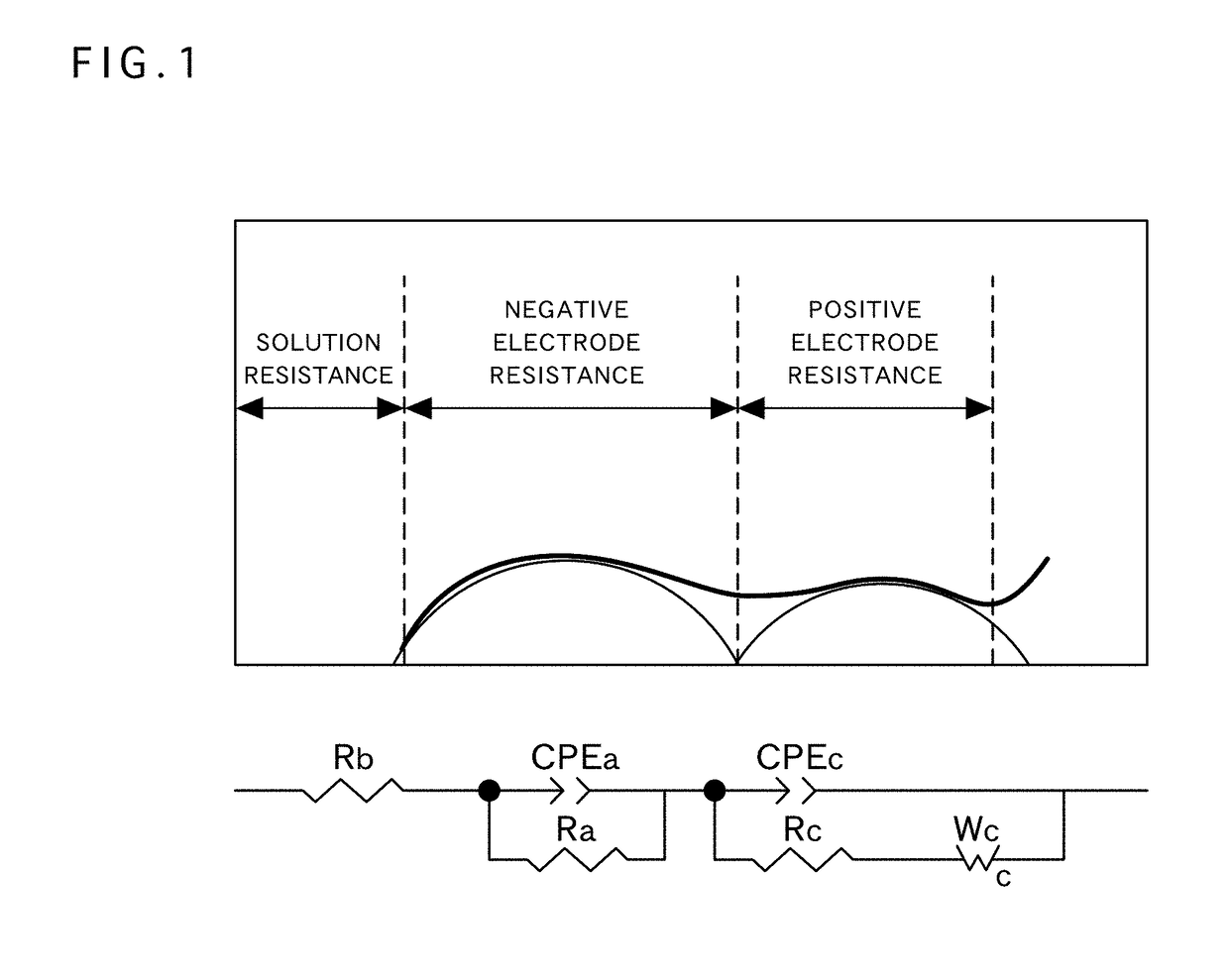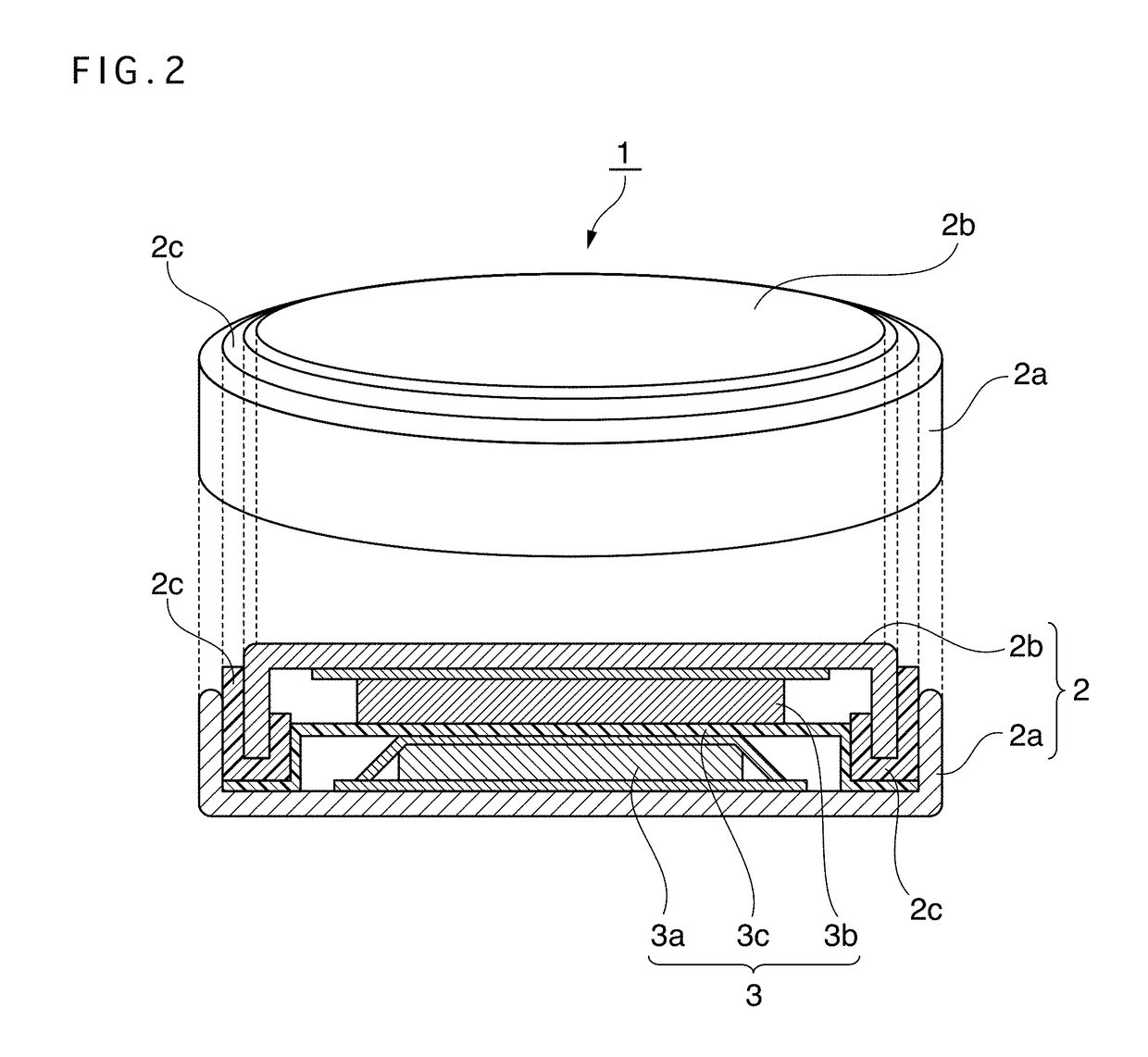Positive electrode active material for nonaqueous electrolyte secondary battery, method for producing same, and nonaqueous electrolyte secondary battery using said positive electrode active material
a nonaqueous electrolyte and active material technology, applied in the direction of cell components, electrochemical generators, nickel compounds, etc., can solve the problems of reducing battery characteristics, battery capacity and cycle characteristics, battery characteristics, etc., and achieves easy production methods and suitable production methods. , the effect of high power
- Summary
- Abstract
- Description
- Claims
- Application Information
AI Technical Summary
Benefits of technology
Problems solved by technology
Method used
Image
Examples
example 1
[0179]A powder of lithium-metal composite oxide particles represented by Li1.030Ni0.82Co0.15Al0.03O2 and obtained by a known technique of mixing an oxide powder containing Ni as a main component and lithium hydroxide followed by firing was used as a base material. The lithium-metal composite oxide powder had an average particle size of 12.4 μm and a specific surface area of 0.3 m2 / g. The average particle size was evaluated using a volume integrated average in the laser diffraction light-scattering method, and the specific surface area was evaluated using the BET method by nitrogen gas adsorption.
[0180]15.6 g of tungsten oxide (WO3) was added into an aqueous solution in which 5.6 g of lithium hydroxide (LiOH) was dissolved in 100 ml of pure water, followed by stirring, to obtain an aqueous solution of a tungsten compound.
[0181]Next, 75 g of a lithium-metal composite oxide powder as a base material was immersed with the aqueous solution, followed by further stirring for 10 minutes, to...
example 2
[0197]A positive electrode active material for nonaqueous electrolyte secondary batteries was obtained in the same conditions as in Example 1 except that 3.5 g of LiOH and 10.5 g of WO3 were used.
[0198]After drying the tungsten-containing mixture after the solid-liquid separation, the water content determined from the mass before and after the drying was 6.8 mass % with respect to the lithium-metal composite oxide particles.
[0199]Further, as a result of analysis by ICP emission spectroscopy, the Li concentration in the liquid component was 1.74 mol / L, the tungsten content in the tungsten-containing mixture was 0.0023 mol, and the Li molar ratio was 3.8.
[0200]As a result of analyzing the tungsten content and the ratio Li / Me in the obtained positive electrode active material by ICP emission spectroscopy, the composition was confirmed to be such that the tungsten content was 0.3 at % with respect to the total number of atoms of Ni, Co, and M, the ratio Li / Me was 0.994, and the ratio Li...
example 3
[0205]A positive electrode active material for nonaqueous electrolyte secondary batteries was obtained in the same conditions as in Example 1 except that 7.0 g of LiOH and 19.3 g of WO3 were used.
[0206]After drying the tungsten-containing mixture after the solid-liquid separation, the water content determined from the mass before and after the drying was 7.3 mass % with respect to the lithium-metal composite oxide particles.
[0207]Further, as a result of analysis by ICP emission spectroscopy, the Li concentration in the liquid component was 3.19 mol / L, the tungsten content in the mixture was 0.0046 mol, and the Li molar ratio was 3.8.
[0208]As a result of analyzing the tungsten content and the ratio Li / Me in the obtained positive electrode active material by ICP emission spectroscopy, the composition was confirmed to be such that the tungsten content was 0.6 at % with respect to the total number of atoms of Ni, Co, and M, the ratio Li / Me was 0.995, and the ratio Li / Me in the core mate...
PUM
 Login to View More
Login to View More Abstract
Description
Claims
Application Information
 Login to View More
Login to View More - R&D
- Intellectual Property
- Life Sciences
- Materials
- Tech Scout
- Unparalleled Data Quality
- Higher Quality Content
- 60% Fewer Hallucinations
Browse by: Latest US Patents, China's latest patents, Technical Efficacy Thesaurus, Application Domain, Technology Topic, Popular Technical Reports.
© 2025 PatSnap. All rights reserved.Legal|Privacy policy|Modern Slavery Act Transparency Statement|Sitemap|About US| Contact US: help@patsnap.com



